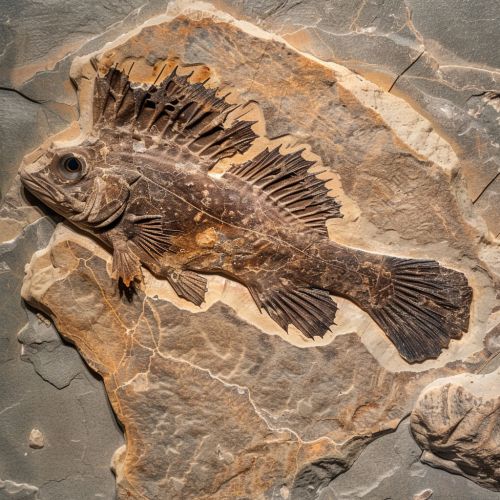Elpistostegalia
Introduction
Elpistostegalia, also known as Panderichthyida, is a clade of stem-group tetrapods. These creatures are significant in the evolutionary history of life on Earth, as they represent a transitional stage between aquatic and terrestrial organisms. Elpistostegalia includes several extinct genera, such as Elpistostege, Panderichthys, and Tiktaalik, which are known from the Late Devonian period.


Evolutionary Significance
Elpistostegalia are considered crucial in understanding the evolution of tetrapods from lobe-finned fish. They exhibit a mix of fish-like and tetrapod-like characteristics, reflecting their transitional nature. For instance, they retained fish-like characteristics such as scales and fins, but also had tetrapod-like features such as a flat head and robust limbs.
Anatomy and Morphology
Elpistostegalia had a unique combination of features that set them apart from both their fish ancestors and tetrapod descendants. They had a flattened body and a broad, flat head, which is a characteristic feature of early tetrapods. However, they also retained fish-like features such as a dorsal fin and scales. The limbs of Elpistostegalia were robust and had strong skeletal structures, which were likely used for locomotion in shallow water or on land.
Genera
The Elpistostegalia includes several genera, each with its unique characteristics and significance in the evolutionary history of tetrapods.
Elpistostege
Elpistostege is one of the most well-known genera of Elpistostegalia. It is known from a nearly complete fossil specimen found in Quebec, Canada. The fossil shows a creature with a mix of fish and tetrapod characteristics, providing crucial evidence for the transition from water to land.
Panderichthys
Panderichthys, another well-known genus of Elpistostegalia, is known from several fossil specimens. It had a more fish-like body plan than Elpistostege, but still exhibited several tetrapod-like features, such as a flat head and robust limbs.
Tiktaalik
Tiktaalik is perhaps the most famous of the Elpistostegalia. It is known from several well-preserved fossil specimens from the Canadian Arctic. Tiktaalik had a mix of fish and tetrapod features, and it is often cited as a key transitional fossil in the evolution of tetrapods.
Conclusion
Elpistostegalia played a crucial role in the evolutionary transition from aquatic to terrestrial life. Their unique mix of fish-like and tetrapod-like features provides important insights into how life on Earth made this significant transition. Despite their extinction, the fossil record of Elpistostegalia continues to inform our understanding of this critical period in the history of life on Earth.
